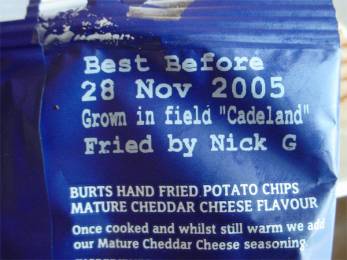
Food & drink
Aged ice cream
One of the biggest trends affecting developed nations is ageing – particularly the rapid increase in those aged over sixty, many of whom have very specific dietary requirements. However, products developed for this segment of the population seem to be few and far between – possibly because the world is still largely run by people in their thirties, forties and fifties. Not so in Japan. One baby food company recently found a new niche for easy-to-swallow baby food products amongst seniors. Meanwhile, an Israeli company called Shefa Group has created an ice cream specifically developed for pensioners. The product, which is high in calories to stop weight loss, is aimed at people aged sixty-five plus and contains added vitamins and fibre. Given the demographic trend for people to live longer (and to stay healthier longer too) why aren’t more food companies targeting this segment of the population?
Ref: ynetnews.com (Israel) 5 March 2006, ‘Innovation: Ice cream for elders’, O. Yefet.
Search words: ageing, ice cream, food
Pop-up restaurants
Pop-up retail (where shops suddenly appear and disappear) is a well-established retail trend which has now migrated into Fast Moving Consumer Goods (FMCG) products.Pop-up products make customers feel that they’ve discovered something new, which imbues cool and exclusivity. For example, the Daily Juice Company in Australia offers limited edition seasonal juices whilst Unilever has offered limited edition fragrances in some of its clothes detergents. The trend has come full circle with the appearance (and disappearance) of pop-up restaurants. Examples include Mist in Antwerp, Food Facility in Amsterdam and Vegetable in Printemps Department store in Paris. According to The New York Times, such restaurants are either a response to fashion (an interest in new or undiscovered neighbourhoods) or they are a media savvy form of guerrilla marketing whereby restaurants gain instant media attention before they settle down in a more permanent location. Then again restaurants have always had habit of appearing and disappearing due to the mobile nature of the talent so perhaps this is really nothing to get very excited about.
Ref: Iconoculture (US) 16 March 2006, ‘Indie pop-up restaurants bubble up in northern Europe’ www.iconoculture.com
Search words: pop-up retail, pop-up, limited edition, guerrilla marketing
Lunch with computers but no chips
A school in the US is planning to launch a system whereby parents will control what their children eat. The scheme uses prepaid cards to allow children to pay for lunch at the school cafeteria but also allows parents to access their child’s food history and block certain food groups or lunch choices. A company called Dairy Farmers launched a similar scheme in Australia a few years ago much to the delight of local politicians, parents and nutrionalists but, not surprisingly, the scheme proved rather unpopular with the end users. This idea might work for small children but do parents seriously think that the average teenager will allow their parents to snoop on what they’re eating? What will happen, most likely, is that cards will be traded at school or the resident computer genius will hack into the cards and remove the prohibited food groups.
Ref: Future Wire (US) 22 February 2006, http://futurewire.blogspot.com
Search words: schools, kids, food, privacy, GPS, smart cards, control
Top 10 new food & drink products
The ‘Top 10 New Product Pacesetters’ is an annual survey by Information Resources Inc (IRI) that ranks the best-performing new products in the US by first year sales. The most recent survey, which ranks products launched between February 2004 and January 2005 lists the following top performers. In first place was the Slim-Fast Optima range of diet products such as shakes and meal replacement bars from Unilever. These contained ‘50% less sugar’ and ‘… one-third of your daily nutrition.’ In second place was Select Beer from Budweiser which claimed to be a ‘new kind of beer’, although the reasons for this claim are not immediately clear. Other winners included Frito-Lay’s Light Salty Snacks and Nabisco’s 100 Calorie Single Serve packs. What all of these new products have in common is the fact that they either claim to be better for you in terms of nutritional standards or they taste better. Another other common feature is that most are in some way more convenient, either in terms of accessibility or speed to prepare or consume.
Ref: Food Navigator.com (US), 7 March 2006, ‘Best-selling product list confirms nutrition, convenience trends’ www.foodnavigator.com
Search words: food trends, new products, health, well-being, convenience, speed
